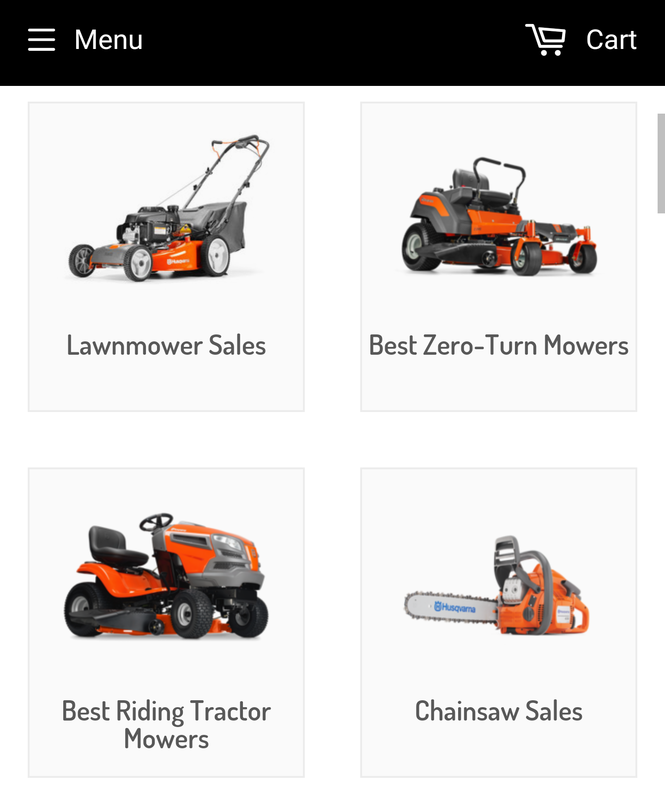|
To start your tractor, first, make sure your tractor is filled with the proper fuel and oil. After making sure you area is clear of debris or people, sit on the seat, set the parking brake and insert the key into the ignition. Before turning the key, check to make sure the transmission is in neutral and move the clutch engagement lever or switch to the designated position.
After moving the throttle to the choke position, you are ready to turn the ignition key and start the engine. Once the engine start, release the key and slowly bring the throttle control from the choke position into the full throttle position. The choke lever may be a separate lever. During cold weather, you may need to engage the choke for a few additional minutes or until the engine has warmed up.Remember, for your safety, the tractor has a safety sensor control which automatically shuts off the engine if you’re not sitting on the seat. To change your tractor’s oil, be sure your tractor is on a level surface and that you have clean-up materials and oil drain container and the oil drain tube that’s included with your tractor. First, find the oil drain valve located at the base of your tractor’s engine. Remove the valve cap and install the oil drain tube onto the fitting. With the container ready to catch the oil, unlock the drain valve by pushing it in and turning. Pull it out to start the oil flow. When the oil has completely drained, close and recap the drain valve to its locked position. Remove the oil filter by turning it counter-clockwise, be careful because oil may drip from the filter and you’ll want to have your clean up materials handy. Make sure the old gasket comes off with the filter otherwise, remove and clean the gasket area. Always dispose the used oil at an oil recycling center. Take the new oil filter and coat the gasket with fresh oil before installing it. Screw the filter onto the engine. Once the gasket makes contact with the engine, turn the filter three quarters to one full turn more to properly secure it. Refill the engine with your new oil through the oil-fill dipstick tube. Pour slowly and don’t over fill. Check the oil level by inserting the dipstick into the tube. When the oil reaches the “full” line, replace the cap dipstick and securely tighten it. You should change the oil in your tractor after every 50 hours of use or at least once a year. If the tractor is used more than 100 hours within 1 year, you should instead replace the oil filter with every season or during every other oil change. To maintain your air filter, begin by detaching the filter cover and removing the filter. Clean the filter with a small, soft brush. You should replace your filter as soon as possible after cleaning it since the act of cleaning a filter can sometimes damage it. As a general rule, if you’re not able to see light through the filter, replace it. Before replacing the filter and reattaching the cover, clean out any dirt or debris found in the filter location. Replacing your mower blades is a quick and easy maintenance step. To begin, raise the mower deck to the highest position. Be sure to wear appropriate hand protection such as heavy leather gloves and wrap the cutting edge of the blade with a heavy cloth. Using the recommended ratchet or socket, remove the blades by turning the bolt counter-clockwise. Before replacing your mower blades, make sure the fins of the blade point upwards to face the deck and mandrel assembly. Also, make sure to align the center hole with the star mandrel so that it fits securely.
1 Comment
Your lawn mower is shipped without oil on the engine. Before fueling, be sure the lawnmower is level. Remove the oil fill-cap dipstick from the oil spill spout. You’ll receive a container of oil with the unit. Slowly pour the entire container down the oil spill spout into the engine. Insert and tighten the oil fill-cap dipstick. Check the oil level before each use. Add oil if needed.
Change the oil after every 25 hours of operation or each season, you may need to change the oil more often under dusty, dirty conditions. Fill the fuel tank to the bottom of the tank filler neck. Do not overfill. Use fresh, clean, regular unleaded gasoline with a minimum of 87 octane. Do not mix the oil with gasoline. Purchase fuel in quantities that can be used within 30 days to assure fuel freshness. Check the crankcase oil level before starting the engine and after each 5 hours of continuous use. Tighten the oil plug securely each time you check the oil level. For the best performance, you should keep the mower housing free of built up grass. Clean the underside of your mower after each use. Your lawn mower is equipped with a fitting that allows for quick and easy cleaning of the underside of the housing. First, move the lawnmower to an area of cut grass or another hard surface. After removing the grass catcher, close the mulcher door then connect the garden hose to the fitting where shown. Do not route the hose under the mower. Turn on the water supply and check for leaks at the fitting. If no leaks are present, start the engine and let it run until the underside of the lawnmower is clean. Once complete, shut off the engine, then shut off the water supply and remove the hose from the fitting. Start the engine and let it run for a full minute to remove excess water from the mower. Before tipping the lawnmower to drain the oil, empty the fuel tank by running the engine until the fuel tank is empty. Disconnect the spark plug wire from the spark plug and place the wire where it cannot come in contact with the plug. Then, remove the oil-fill cap and lay aside on a clean surface. Tip the lawn mower on its side and drain the oil into a suitable container. Rock the lawn mower back and forth to remove any oil trapped inside the engine. Be sure to wipe off any spilled oil from the lawnmower or side of the engine. Fill the engine with oil. Slowly pour about 16 ounces of oil down the oil-fill spout into the engine. Wait one minute to allow the oil to settle. Use the gauge on the oil-fill cap dipstick for checking level. Insert the dipstick into the tube and rest the oil-fill cap on the tube. Do not thread the cap into the tube while taking the reading. Continue adding small amounts of oil and rechecking the dipstick until it reads full. Do not overfill or the engine will smoke on start-up. Always be sure to retighten the oil-fill cap before restarting the engine. Finish by reconnecting the spark plug wire to the spark plug. Your engine will not run properly and may be damaged by using a dirty air filter. Replace the air filter every 100 hours of operation or every season whichever occurs first. Service the air cleaner more often under dusty conditions. To clean the air filter, remove the cover. Next, carefully remove the cartridge. Clean the filter by gently tapping it on a flat surface. If very dirty, replace the cartridge. Install the new or cleaned cartridge, then replace the cover. |
Shop Online:
|
Links to our other sites:Support Center |
Connect with us!1642 Woodward Dr.Ottawa,
K2C 3R8, Ontario, Canada Ph: 1-800-610-5635 Fax: 1-800-610-5635 www.Yarmand.ca |
© 2001-2024 Yarmand Tech Ltd. www.Yarmand.ca Powered by: ClientsViews.com Privacy Policy




 RSS Feed
RSS Feed
